2025 IEEE SPS Seasonal School on Synthetic Aperture Imaging for Radar, Sonar, and Optics
April 1st to 3rd 2025
SPONSORS

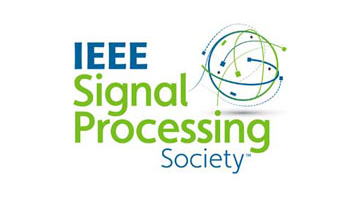
ABSTRACT
There are plenty of signals of interest — complex, hidden, weak, and distant — that are difficult to measure or acquire. For instance, an airborne radar’s swath is limited while using a conventional phased array antenna. Similarly, it is tedious to image a three-dimensional (3-D) object using a single sensor. In optics, in the absence of advanced phase retrieval techniques, the complex signal cannot be accurately estimated from magnitude-only diffraction patterns. Once the signal is acquired, retrieving useful information from it entails developing an additional set of algorithms to sample, process, and enhance it. It is against this background that synthetic aperture (SA) systems, which provide improved signal acquisition and information extraction than is inherently possible via a single sensor, have gained salience in various signal processing applications. The concept of SA has been leveraged in a variety of applications to improve environmental imaging and sensing performance beyond the spatial or temporal resolution limits of conventional antennas and sensors. In general, SAs are generated by moving an antenna, sensor, or probe to different spatial locations such that it records phase coherent measurement samples over an extended volume. The most prominent example of SA application is, of course, in radar remote sensing. In the case of synthetic aperture radar (SAR), the antenna is mounted on an airplane and constant velocity motion along the flight path creates an angle- dependent Doppler shift that is used to image a ground scene with cross-range resolution proportional to the length of the aircraft’s path along the coherent processing interval. In channel sounding applications where the propagation characteristics of a static wireless environment must be determined, the SA is created by using a robot or other mechanical positioner to move the antenna and collect phase-coherent samples from different spatial locations. The complex samples are then combined coherently in post-processing to yield high-resolution angle estimates of signal sources and scatterers.
The rising importance of SAs in signal processing was recently recognized by the IEEE Signal Processing Society (SPS) when it formally approved the creation of the Synthetic Aperture Technical Working Group (SA-TWG) in April 2020 under the auspices of the Sensor Array and Multichannel (SAM) Technical Committee (TC): https://signalprocessingsociety.org/community-involvement/synthetic-aperture- technical-working-group/synthetic-aperture-technical
This subsequently led to the establishment of the first standards committee of SPS in the form of the IEEE Synthetic Aperture Standards Committee (SASC) in 2021: https://sagroups.ieee.org/sps-sasc/
The SA-TWG itself has spanned into a large community drawing researchers from at least six different TCs: Applied Signal Processing Systems TC, Bio Imaging and Signal Processing TC, Computational Imaging TC, Sensor Array and Multichannel TC, Signal Processing for Communications and Networking TC, Signal Processing Theory and Methods TC. A crucial aspect of these efforts is to train a future workforce and researchers who are well-equipped with the contemporary knowledge of SA technologies and challenges. In this context, this seasonal school, the first of its kind, aims to bring together leaders from across the globe to disseminate learning on various SA topics – SAR, ISAR, sonar, ISAC, and optics – to students. The seasonal school is organized by various members of the SA-TWG.
Registration is complimentary but obligatory (Registration Link)
Nearby Hotel Recommendations:
-
Crowne Plaza New Delhi
-
Hyatt Regency Delhi

Venue: Indraprastha Institute of Information Technology New Delhi, Okhla Phase III, New Delhi 110020, India
Email of the Primary Technical Contact: shobha@iiitd.ac.in
Organization Committee:
- General Chairs: Kumar Vijay Mishra, United States DEVCOM Army Research Laboratory, USA, and Shobha Sundar Ram, Indraprastha Institute of Information Technology Delhi, India
- Technical Chairs: Raghu Raj, US Naval Research Laboratory, USA, and Muralidhar Rangaswamy, US Air Force Research Laboratory
Target Audience: Graduate students (M.Tech, PhD Students), young professionals, early career academics.
TECHNICAL PROGRAM SCHEDULE
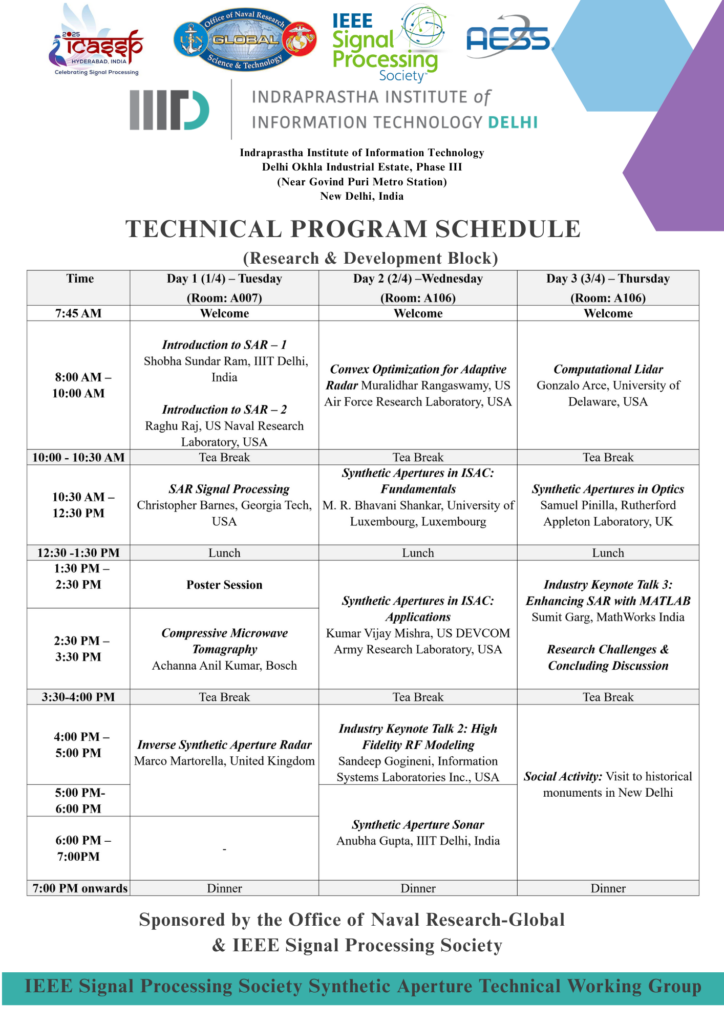

Christopher F. Barnes is an Associate Professor in the School of Electrical and Computer Engineering at the Georgia Institute of Technology in Atlanta, Georgia, USA. Prof. Barnes has thirty-nine years of experience in basic and applied research and has twenty-seven years of experience teaching SAR at the professional education and graduate student level. He is author of Synthetic Aperture Radar, Wave Theory Foundations, Analysis & Algorithms, 2015.
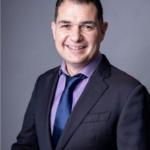
Marco Martorella received his Laurea degree (Bachelor+Masters) in Telecommunication Engineering in 1999 (cum laude) and his PhD in Remote Sensing in 2003, both at the University of Pisa. He is now Professor at the School of Engineering of the University of Birmingham, where is Head of the Microwave Integrated Systems Laboratory (MISL) and Director of the Communications and Sensing Cluster. He is also Chair of the NATO Sensors and Electronics Technology (SET) Panel and Vice-Director at the Radar and Surveillance Systems (RaSS) National Laboratory in Pisa (Italy). He is author of about 300 international journal and conference papers, 4 books and more than 20 book chapters. He has chaired several NATO research activities, including the SET-293 RTG on “RF Sensing for Space Situational Awareness” and the SET-250 RTG on “Multi-dimensional Radar Imaging”, one Exploratory Team and three Specialist Meetings on imaging- and space-related themes. He has been recipient of the IEEE 2013 Fred Nathanson Memorial Radar Award, the 2016 Outstanding Information Research Foundation Book publication, four NATO SET Panel Excellence Awards (2017, 2018, 2021 and 2023) and two NATO STO Excellence Award (2022. 2024). He is a co-founder of ECHOES, a radar systems-related spin-off company. His research interests are mainly in the field of radar, with specific focus on radar imaging, multidimensional radar, passive radar and space situational awareness. He is a Fellow of the IEEE.
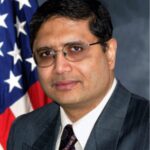
Muralidhar Rangaswamy (S’89-M’93-SM’98-F’06) received the Ph.D. degree in electrical engineering from Syracuse University, Syracuse, NY, in 1992.,He is presently a Senior Electronics Engineer at the Sensors Directorate of the Air Force Research Laboratory (AFRL), Hanscom Air Force Base, MA. Prior to this, he has held industrial and academic appointments. His research interests include radar signal processing, spectrum estimation, modeling non-Gaussian interference phenomena, and statistical communication theory. He has co-authored more than 70 refereed journal and conference record papers in the areas of his research interests. Additionally, he is a contributor to three books and is a co-inventor on two U.S. patents.,Dr. Rangaswamy received the 2004 Fred Nathanson Memorial Radar Award from the IEEE Aerospace and Electronics Systems Society, the 2006 Distinguished Member award from the IEEE Boston Section, and the 2005 Charles Ryan Basic Research Award from the Sensors Directorate of AFRL, in addition to 20 AFRL scientific achievement awards.
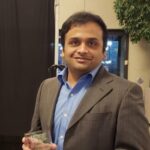
Dr. Sandeep Gogineni has over 17 years of experience working on radar and wireless communications systems. He worked for 6 years as an on-site contractor for Air Force Research Laboratory (AFRL), developing novel signal processing algorithms and performance analysis for passive radar systems. He received the 2018 IEEE Dayton Section Aerospace and Electronics Systems Society Award for these contributions to passive radar signal processing. Prior to his time at AFRL, during his graduate studies at Washington University in St. Louis, Dr. Gogineni developed optimal waveform design techniques for adaptive MIMO radar systems and demonstrated improved target detection and estimation performance. This work was recognized with the Best Student Paper Award at the 2012 International Waveform Diversity & Design Conference (WDD). At Information Systems Laboratories Inc., Dr. Gogineni has been working as a senior research scientist on developing state-of-the-art high-fidelity RF modeling and simulation tools, channel estimation algorithms and optimal probing strategies for MIMO radar systems in the context of Cognitive Fully Adaptive Radar (CoFAR). He has also developed AI/ML based solutions for complex RF applications and implemented them on low C-SWaP neuromorphic hardware. His expertise includes statistical signal processing, modeling and simulation, detection and estimation theory, machine learning, artificial intelligence, performance analysis, and optimization techniques with applications to active and passive radar systems.
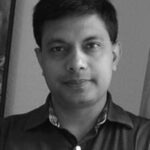
Kumar Vijay Mishra obtained a Ph.D. in electrical engineering and M.S. in mathematics from The University of Iowa in 2015, M.S. in electrical engineering from Colorado State University in 2012, and B. Tech. summa cum laude (Gold Medal, Honors) in electronics and communication engineering from the National Institute of Technology, Hamirpur (NITH), India in 2003. He is currently Senior Fellow at the United States Army Research Laboratory (ARL), Adelphi. He is the recipient of several awards and fellowships. He is the lead / corresponding editor of the upcoming book Signal Processing for Joint Radar-Communications (Wiley-IEEE Press).
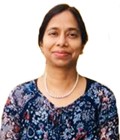
Anubha Gupta received her PhD. from IIT Delhi, India in 2006 in Electrical Engineering. She did her second Master’s from the University of Maryland, College Park, USA from 2008-2010 in Education. She worked as Assistant Director with the Ministry of I&B, Govt. of India from 1993 to 1999 and, as faculty at NSUT-Delhi (2000-2008) and IIIT-Hyderabad (2011-2013), India. Currently, she is working as a Professor at IIIT-Delhi. Prof. Gupta has authored/co-authored more than 150 technical papers, has two US and two Indian patents. She is a recipient of SERB POWER Fellowship, 2021 and IETE PROF SVC AIYA MEMORIAL AWARD-2022. Her recent work on “Explainable AI Model for Cardiac Disorder Detection” won the 2023 “Lab2market” challenge of IndiaAI, Govt. of India. Her research interests include compressive sensing, sparse signal representation, wavelet transforms and its applications, and applications of machine learning in biomedical signal and image processing.
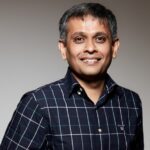
M. R. Bhavani Shankar received Masters and Ph. D in Electrical Communication Engineering from Indian Institute of Science, Bangalore in 2000 and 2007 respectively. He was a Post Doc at the ACCESS Linnaeus Centre, Signal Processing Lab, Royal Institute of Technology (KTH), Sweden from 2007 to September 2009. He joined SnT in October 2009 as a Research Associate and is currently a Senior Research Scientist/ Assistant Professor at SnT leading the Radar Signal Processing activities. He was with Beceem Communications, Bangalore from 2006 to 2007 as a Staff Design Engineer working on Physical Layer algorithms for WiMAX compliant chipsets. He was a visiting student at the Communication Theory Group, ETH Zurich, headed by Prof. Helmut Bölcskei during 2004. Prior to joining Ph. D, he worked on Audio Coding algorithms in Sasken Communications, Bangalore as a Design Engineer from 2000 to 2001. He is currently the Chair of the IEEE Benelux joint chapter on communications and vehicular technology, serves as handling editor for EURASIP Journal on Advances in Signal Processing and is a member of the IEEE SPS SAM Technical Committee. He was a co-recipient of the 2014 Distinguished Contributions to Satellite Communications Award, from the Satellite and Space Communications Technical Committee of the IEEE Communications Society and co-author of the paper that received Special Mention for the Barry Carlton best paper award by IEEE TAES in 2023.
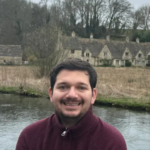
Samuel Pinilla received the B.S. degree (cum laude) in Computer Science in 2014, the B.S. degree in Mathematics, and the M.S degree in Mathematics from Universidad Industrial de Santander, Bucaramanga, Colombia in 2016 and 2017, respectively. His Ph.D. degree from the Department of the Electrical and Computer Engineering, Universidad Industrial de Santander, Bucaramanga, Colombia. He is a senior data scientist at the Rutherford Appleton Laboratory, United Kingdom. In the past, Dr. Pinilla held Visiting Postdoctoral Researcher positions at Tampere University 2020-2021 and worked as a fellow research associate at The University of Manchester 2021-2022. His research interests focus on the areas of high-dimensional structured signal processing, machine learning, scalable AI, and (non)convex optimization methods. Dr. Pinilla is the recipient of the Eloy Valenzuela Prize for his doctoral studies, the International Conference on Acoustics, Speech and Signal Processing top 3% Paper Recognition in 2023.
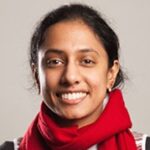
Shobha Sundar Ram is an Associate Professor at the Dept. of Electronics and Communications Engineering, Indraprastha Institute of Information Technology, Delhi. She did her Bachelor of Technology in ECE from the University of Madras, India in 2004 and then her Master of Science and Ph.D. in electrical engineering from the University of Texas at Austin, USA in 2006 and 2009 respectively. She is engaged in research and education principally in the areas of radar signal processing and electromagnetic sensor design and modeling. She is a Senior Member of IEEE, an Associate Editor for the IEEE Transactions on Aerospace and Electronics Systems, guest editor for IEEE Transactions on Radar Systems and IEEE Transactions on Computational Imaging, member of the Radar Systems Panel, and the secretary for the IEEE Microwave Theory and Techniques Society for 2025.
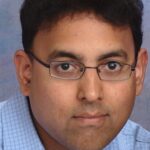
Raghu G. Raj (U.S. Naval Research Laboratory) (Senior Member, IEEE) received the Ph.D. degree in Electrical Engineering from The University of Texas at Austin in 2007; and his undergraduate degrees in Computer Science and Electrical Engineering from Washington University in St. Louis. He is currently a Senior Research Scientist and the Head of Radar Imaging and Target ID Section, Radar Division, U.S. Naval Research Laboratory (NRL), Washington DC, USA, where he leads the research and development of advanced methods in radar imaging, detection, and target identification with applications to various U.S. DoD funded programs. He has more than 90 publications in various international journals, conferences, and technical reports. Dr. Raj was a recipient of the NRL Alan Berman Publication Award. His research interests span various signal/image processing, machine learning, and electromagnetic and inverse problems in radar and remote sensing. Dr. Raj is an Associate Editor of the Radar section of IEEE Transactions on Aerospace and Electronic Systems, an Associate Editor of URSI Radio Science Letters, and the Co-Chair of the IEEE SPS SAR Standardization Committee. He holds nine U.S. patents.
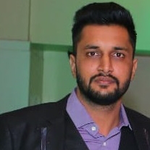
Sumit Garg is a Principal Application Engineer at MathWorks India, with a focus on the design, analysis, and implementation of signal and data processing applications. He collaborates closely with clients in radar, phased array, and sensor fusion domains. With over 12 years of industry experience, Sumit has been involved in the full lifecycle of aerospace and defense projects, developing both hardware and software applications in the radar field.
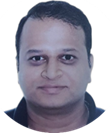
Anil Kumar received his Ph.D. from Nanyang Technological University (NTU), Singapore. He has over 18 years of industrial research experience, having worked at Accord Software & Systems as a Senior Systems Engineer in Bangalore, Research Engineer at Panasonic Singapore Laboratories, and Temasek Laboratories, NTU as a Senior Research Scientist. He later worked at TCS Research as a Principal Scientist before recently moving to Bosch, where he currently leads the 6G efforts for Bosch India.
He has authored over 70 publications in top-tier venues and has 65 patents filed and/or granted. His current research interest spans in the broad areas of 6g, Integrated Sensing and Communication, MIMO radar processing and computational sensing & imaging.
